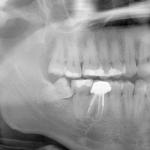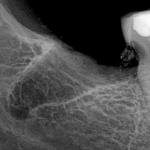By Arthur Kezian
Dental extractions are simply the removal of one or more teeth from the mouth and are not uncommon procedures. Despite public education of preventative dental care, tooth decay and abscess are the most frequent reasons for the procedure. However, another common need, especially in young patients, is failure of a tooth to fully erupt from within the gums resulting in impaction. Typically, impacted teeth are the molars and can affect one or both sides of the mouth. Regardless of the reason for a dental extraction, the procedure can seem daunting. Here are some guidelines on what to expect.
Dr. Kezian is fully experienced in all kinds of dental extractions. He and his staff can provide answers to any of your questions and alleviate any concerns.
Reasons for Dental Extractions
There are a variety of reasons that a patient may seek a dentist for a tooth extraction.
- Dental caries or tooth decay is the most common reason. Some studies have shown dental caries account for up to 65% of all tooth removals.
- Extra teeth may block or prevent other teeth from erupting; therefore, removal of the extra teeth may be necessary for overall dental health, i.e. impacted wisdom teeth.
- Tooth extraction may be necessary to prep the teeth for orthodontic work
- Trauma or other causes of fractured teeth that are not repairable
- Malformed teeth, either congenital or due to other causes
- Too little space or room for the wisdom teeth
- Cosmetic reasons to improve confidence
Regardless of the etiology necessitating a patient to undergo dental extractions, Dr. Kezian and staff can provide professional expertise and comfort to anyone facing this situation.
How the Dental Extraction Procedure Works
 There are essentially two different ways to complete a tooth extraction. A simple dental extraction is appropriate when the tooth to be removed is visible and relatively easy to extract with simple tools. A local anesthetic can be used to numb the gums and prevent pain or discomfort. A surgical dental extraction, as the name implies, is more complicated. It requires an incision into the gum line and a general anesthetic for the procedure. Special tools or drills are used.
There are essentially two different ways to complete a tooth extraction. A simple dental extraction is appropriate when the tooth to be removed is visible and relatively easy to extract with simple tools. A local anesthetic can be used to numb the gums and prevent pain or discomfort. A surgical dental extraction, as the name implies, is more complicated. It requires an incision into the gum line and a general anesthetic for the procedure. Special tools or drills are used.- When using a general anesthetic the whole body is affected. Like any other
 surgery, the dentist will advise the patient not to eat or drink anything after midnight the day of the procedure. Expect a 24 hour period of general tiredness and grogginess.
surgery, the dentist will advise the patient not to eat or drink anything after midnight the day of the procedure. Expect a 24 hour period of general tiredness and grogginess. - Once the tooth has been removed, the gum line may require stitches. Depending on the stitch type, some will dissolve over time while others may need to be removed a few days after the extraction.
What to Expect After a Dental Extraction
- Recovery from this minor surgery will take two to five days.
- Pain and discomfort can be relieved with over-the-counter pain medications or the dentist can prescribe prescription strength pain relief.
- Bleeding or oozing from the site of tooth removal may last up to twenty-four hours. If this occurs longer, the dentist needs to be notified immediately.
- A diet modification such as liquids and soft foods for the next few days will be helpful.
- Warm salt water mouth rinses may reduce swelling and soreness.
Over time, the clot within the wound will resolve and soft tissue will form within the gum line. The whole process takes one to two months.
Dental extractions, when performed by experienced dentists or oral surgeons, are safe and have few complications. If problems do arise, these may include infection at the incision site or excessive bleeding. The dentist can stop any excess bleeding and may prescribe antibiotic therapy to treat or prevent wound infection. Whether a tooth extraction is an elective or urgent procedure, Dr. Kezian is available for a consultation today!
Dr. Arthur A. Kezian DDS 443 N. Larchmont Blvd Los Angeles, CA 90004 (323) 467-2777
